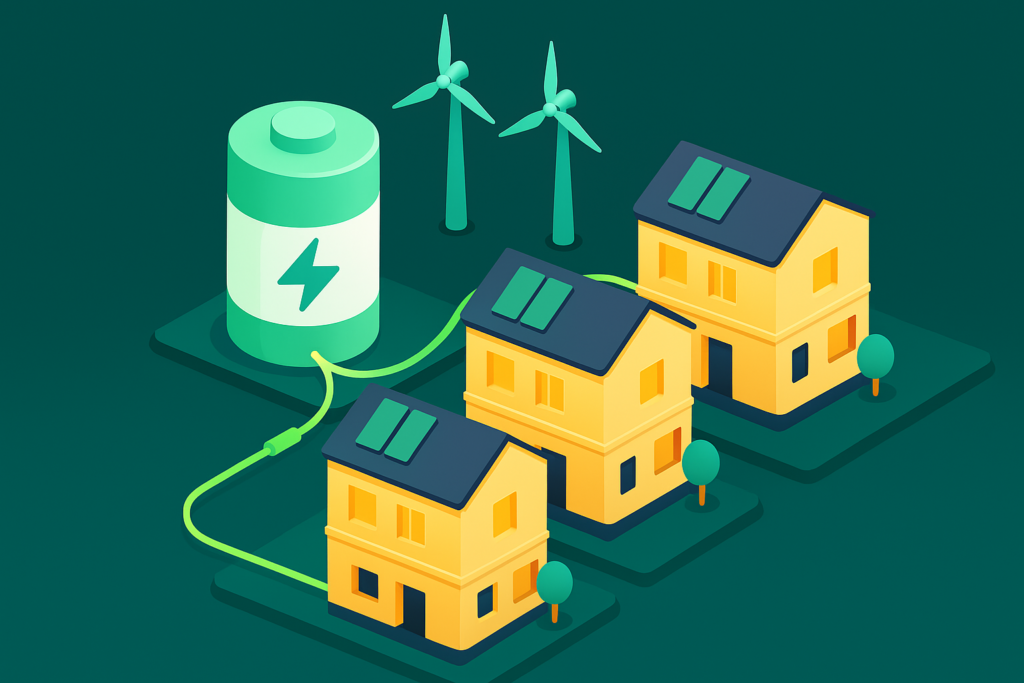In 2024, the UK spent more than £250 million each month on imported electricity. During the second quarter alone, this equated to 12.2 TWh. And yet, that same year also marked record highs for domestic renewable energy yields in the UK.
So why is so much of our power in the UK imported? It’s expensive, and places energy stability in the hands of international geopolitical issues. The short answer is: it’s complicated.
Let’s dive in.
Clear the fog with NeuWave…
Next-gen environmental intelligence platform for offshore navigation and site assessment. NeuWave tools provide clearer insights for smarter decisions; built on high-resolution hindcast data and real time conditions reports.

What percentage of the UK’s electricity is imported?
Roughly 15-20% of the UK’s energy was imported last year, enough to power over 10 million homes.
Much of Britain’s traditional power generators, such as coal and aging nuclear power plants, have been retired in recent decades. Shutting down coal in particular was both an environmental milestone and a practical gamble. It reduced emissions, but also removed a dependable source of base-load power.
Replacing that essential capacity takes time, resources, and political will; and “import” rather than “replace” has been largely favoured for convenience.
That strategy worked in the short term. Interconnectors smoothed demand peaks and have kept the lights on, but global shortages and price spikes (made worse by the ongoing war in Ukraine and rising demand across Europe) have since exposed the fragility of the approach.
Britain’s energy bills climbed sharply as imported power carried foreign volatility directly onto UK household accounts.
In response, Great British Energy (GB Energy) has been tasked with spearheading a shift for greater “energy security” (read independence), by investing in UK-based clean power sources and reducing our reliance on imported energy from abroad.
In theory, this would stabilise prices and anchor the country’s energy future to homegrown renewables rather than imported uncertainty. But it won’t happen overnight.
How does the UK produce most of its electricity?
To understand why we still import so much electricity, it helps to look at how the UK generates its energy today.
The UK’s energy ecosystem has changed significantly over the last 30 years. Since the 1990s, mounting pressure to cut emissions, combined with advancements in renewables tech, has steered the country away from fossil fuel reliance towards a greener grid profile.
The pivot away from coal is especially symbolic. After 150 years of dominance, in October 2024, Britain’s last coal-fired power plant powered down. The closure marked the end of a bygone era, but it also left a sizeable gap in reliable energy production capacity.
Offshore wind has been pegged to fill that void, and since 2023, wind power – driven largely by turbines off Britain’s coasts – has become the country’s single largest (domestically produced) energy source. This has continued to rise, and the government has set aspirational (yet realistic) targets of 50 GW for 2030. Enough to make offshore wind the backbone of the UK’s electricity mix.
But for true energy stability we can’t rely solely on offshore wind.
When it comes to renewables, solar power also makes up a considerable amount of the electricity going through the national grid, alongside a smaller portion of hydroelectric power. Nuclear and biomass together account for just under 20% of supply. What remains (approx 23%) still comes from fossil fuels.
This mix highlights the paradox: Britain is a renewable leader on paper, but fossil fuels and imports still plug gaps when the wind drops or demand spikes.
Does the UK generate enough electricity?
The straightforward answer is no, not yet.
As it stands, it’s clear that the UK does not generate enough to meet its current domestic electricity demands. And that demand is ever-increasing: set to be 50% higher by 2035, and expected to have doubled by 2050.
Today, wind power leads the charge, contributing just under 30% of domestic production. But even that impressive share can’t meet surging demand without broader support.
The UK has pledged to connect an additional 40 GW of offshore wind to the electricity grid by the end of this decade. On paper, this would be almost enough to power every home in Britain. But achieving this requires much more than installing turbines; it’s going to require massive infrastructure upgrades.
That’s where the National Grid’s “Great Grid Upgrade” will come in, intended to bring the country’s renewable energy infrastructure up to scratch.
Between 2025 and 2029, more than £30 billion will be poured into strengthening infrastructure. This includes new high-voltage lines, subsea cables, and control systems designed to carry renewable energy efficiently from remote offshore farms to population centres inland.
Where the previous generation grid infrastructure was built around the inland power plants, a network fit for renewables in the UK means connecting our energy assets out at sea.
And that’s a big job, including complex seabed cabling, new ports and vessels for servicing, advanced construction methods, and an ever-growing workforce of skilled technicians to maintain it all. Britain has the renewable capacity potential, but hasn’t yet developed the network resilience to fully harness it.
Why is power in the UK so expensive?
The UK isn’t just facing a production gap. We’re facing a cost problem, too.
It all comes down to market mechanics, infrastructure shortcomings, and international geopolitical volatility – and yes, while that includes the Russian invasion of Ukraine there’s much more to boot.
Britain’s electricity bills remain the highest in Europe largely because expensive natural gas production and importation sets the price of electricity 98 per cent of the time (despite gas only contributing around a third of total energy usage).
This is due to the marginal pricing system: where the costliest form of generation needed to match demand dictates the cost paid to all providers.
Compounding this are the unavoidable facts of Britain’s geography. As an island nation, the UK relies on undersea interconnectors to trade power with Europe. These links are expensive to build and limited in their capacity, restricting access to cheaper imports when local generation dips.
At the same time, congestion within the domestic grid leads to inefficiencies. Wind farms are sometimes even paid to power down when transition lines can’t handle their output, forcing the system to lean back on gas plants instead.
It’s not even just practical; policy, of course, plays its part. Around a quarter of electricity bills go towards environmental schemes, subsidies for low-carbon generation, and network upgrade costs. While these measures support the green transition, they also inflate short-term costs.
Even as renewable capacity grows, households continue to pay inflated bills because the system itself – pricing rules, infrastructure limits, and policy costs – remain stubbornly high.
The UK doesn’t lack energy generation potential, even when it comes to hitting optimistic renewables targets. Offshore wind, solar, and other clean technologies give Britain one of the strongest renewable profiles in Europe. The issue is transforming that potential through a currently limited system.
Right now, imports patch over the gap between ambition and reality. They ensure security of supply, but at the cost of higher bills and exposure to foreign market shocks.
Breaking this cycle requires a three-pronged shift:
- Upgrading the grid to connect renewable assets seamlessly.
- Reforming pricing rules so that cheap renewables, not expensive gas, set the market tone.
- Maximising homegrown generation by scaling offshore projects, nuclear investment, and energy storage solutions.
Get those pieces in place, and Britain’s energy story could change dramatically: from exposed and expensive to stable, affordable, and world-leading.
Unlock tomorrow’s offshore intelligence…
NeuWave transforms how offshore teams plan and operate. Our WAVE platform blends historical and live environmental data into clear, actionable insights; helping you anticipate risks, streamline decisions, and future-proof every stage of development.

